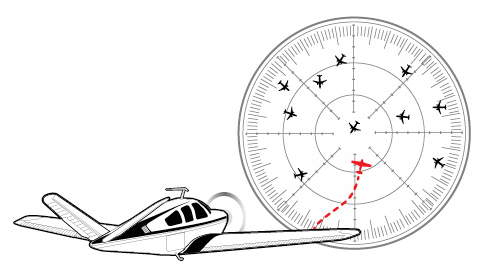Flight Lesson: Airspace bust
Prepared for a scenic adventure—but not the next step

On August 4, 2017, I busted Class Delta airspace at Westchester County Airport (HPN) in New York. It bruised my ego and taught me a couple lessons.
My husband, John, and I planned to fly 650 nautical miles from Florida to Westchester in our Beechcraft Bonanza V35 for a family reunion. I looked forward to this trip because I would get to fly through New York City via the Hudson River exclusion zone, a 22-nautical-mile-long, low-altitude VFR path over the Hudson River, along the west side of Manhattan.
We stopped in Newport News, Virginia, and the next morning, I filed a composite flight plan: IFR to the DIXIE intersection 10 nm south of New York City, then VFR for the remainder. I had thoroughly prepared for the flight over the Hudson River since the airspace was not only new to me, but it is uncontrolled and highly congested, with special operating procedures.
Our destination was five nm up-river from the exclusion zone, then seven nm east. I could continue my flight to the Tappan Zee Bridge, then turn east to call the tower and land. Quick and easy.
We had an incredible flight through the city with little other traffic, and continued up the river, marveling at the bridge. Then suddenly, there I was, three nm west of Westchester County Airport airspace and not set up to call for clearance. I turned northeast to try to avoid the airspace and get myself oriented.
Listening to the Westchester County tower frequency, I could hear other airplanes—some were jets—coming in to land on Runway 16. When we reached 7 nm north I made a 180-degree turn to the right and called the tower. It took two calls before the controller came back to me.
“November-Five-Two-Three-Quebec, is that you five nm north of the airport?” the controller asked.
“Affirmative,” I said, grateful that I was finally in contact with ATC.
“Uh, ma’am, you’re in the flight path of my incoming traffic,” he announced.
The controller was stern, but forgiving, and he politely vectored me west out of the path of the approaching jets and cleared me to land on Runway 11. I anxiously waited for him to give me a phone number to copy down, but he never did. I was lucky.
On the ground, one close look at the VFR chart told me what I had done wrong. Most Class Delta airspaces are defined by a complete circle around the airport, but some of them have a rectangular extension designed to protect incoming IFR traffic. Westchester County Airport had one of those extensions to the northwest for airplanes landing on Runway 16 and that is what I violated.
Why was I so ignorant of the airspace? During my flight planning I was so focused on studying the procedures for flying up the hectic Hudson River that I failed to review the environs of the destination airport. The lesson here is twofold: First, one should plan for all phases of a flight, not just the most unusual and exciting part. Approach and landing especially need to be planned for. Second, plan your entry into controlled airspace well in advance—and make sure you have contingency plans if you are unable to enter when you expect to. That day I was fortunate, but with better flight planning I would not have needed so much luck on my side.

